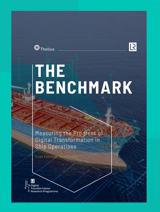The initiative will focus on the key factors needed to assess the potential uptake of ammonia bunkering.
Lloyd's Register (LR), the global professional services organisation specialising in maritime engineering and technology solutions, has been selected to undertake key feasibility studies into using clean ammonia to refuel ships at the world-scale ports in the Pilbara region of Western Australia.
The announcement follows the signing of a collaboration agreement in August between Yara Clean Ammonia and Pilbara Ports Authority (PPA).
Yara Clean Ammonia Vice President Bunkering – Port Relationships & Regulation, Tessa Major said Yara’s existing and developing operations in the Pilbara are the perfect catalyst for unlocking new opportunities, and this is strengthened by a shared commitment with PPA to enable decarbonisation in the shipping industry.
“Yara Clean Ammonia's ambitions in Australia will move the dial in the energy transition and an exciting part of that is creating emission-free fuel to power ships.” Ms Major said.
LR will provide analysis focusing on key factors needed to assess the potential uptake of ammonia refueling (also known as bunkering). The feasibility study will comprise the market for clean fuels in shipping; shore side infrastructure requirements; safety considerations; and the regulations required to support ammonia bunkering at Pilbara ports. The execution of the study is expected to take at least 12 months.
Last month, the final investment decision was announced for Project Yuri, which will see a renewable hydrogen plant built adjacent to the Yara Pilbara’s existing ammonia plants close to PPA’s Dampier port. The Yuri plant is an innovation-leading approach and will be one of the first globally to demonstrate the use of renewable hydrogen as a feedstock to produce ammonia at an existing ammonia plant, and is the first project of its kind in Australia.
PPA CEO Roger Johnston said the feasibility study will guide the future of ammonia bunkering in the Pilbara.
“PPA is well placed to support clean energy transitions in the maritime industry in the Pilbara,
“Our operations are in close proximity to ammonia fuel production facilities and there are numerous bulk ships dedicated to particular routes which frequently visit our ports.”
Lloyd’s Register chief commercial officer Andy McKeran said the maritime industry had to make some significant investment decisions around alternative fuels in the decade ahead, but maritime value chain stakeholders needed surety on future fuel availability and the existence of landside infrastructure.
“Studies like this one will help give more certainty on the feasibility of the options being considered and will enable the industry to work to address the safety challenges around their safe adoption,” Mr McKeran said.
As part of the study, Yara Clean Ammonia and PPA will look to establish an advisory committee including representatives of shipping customers and providers to have input into the process.






